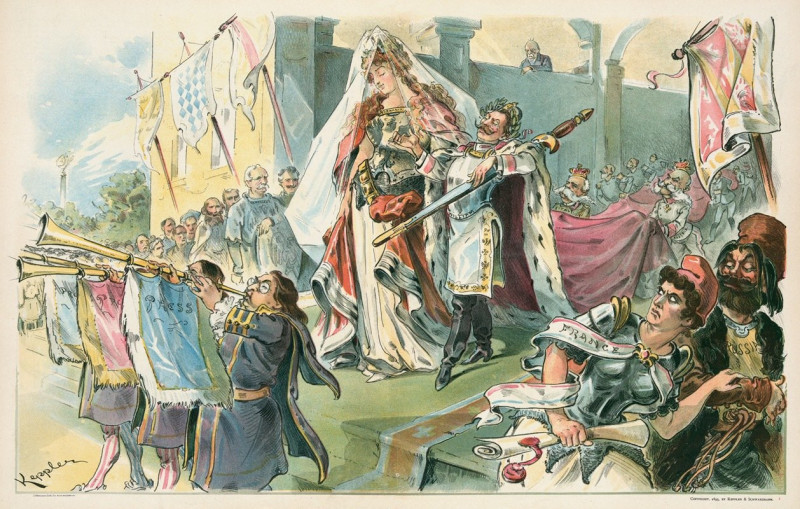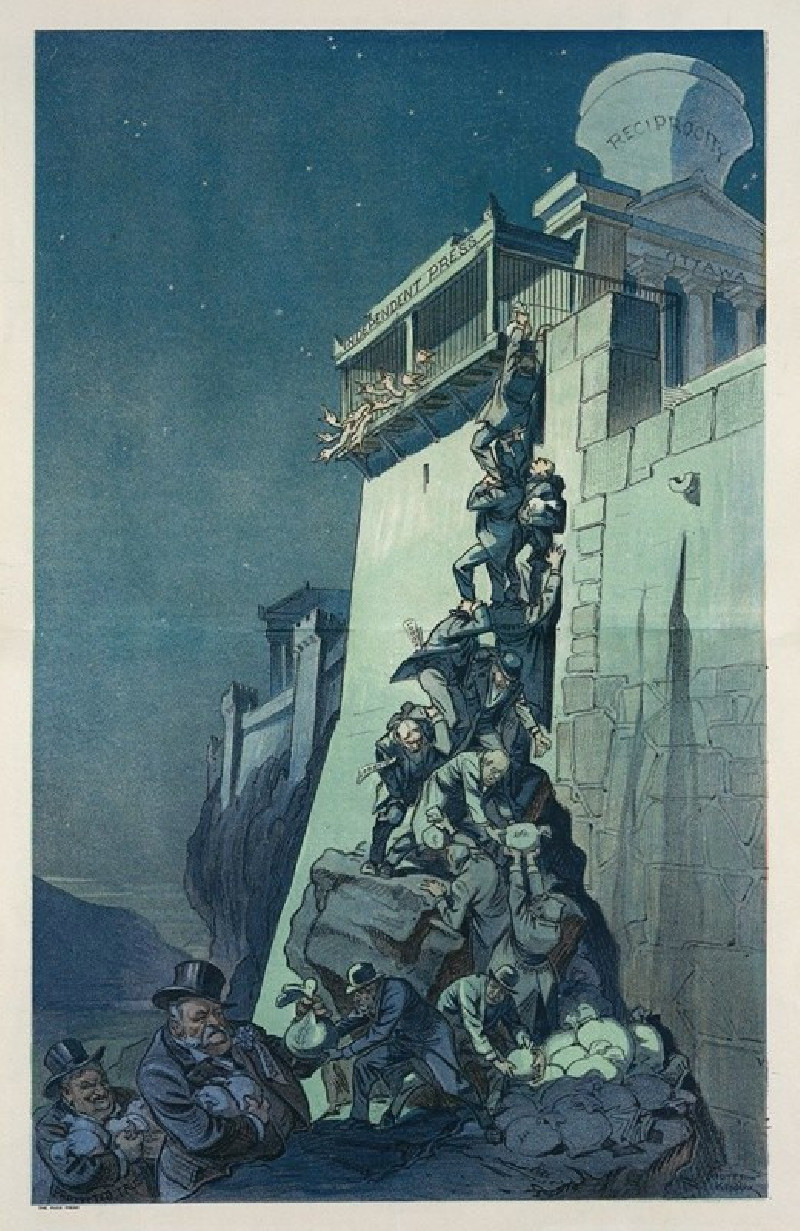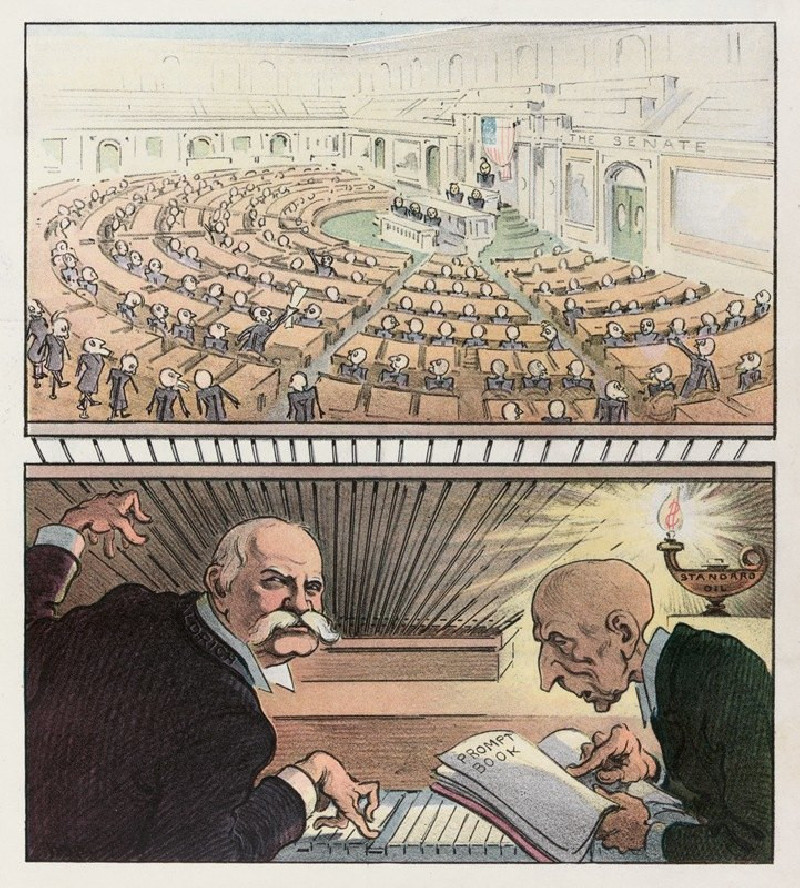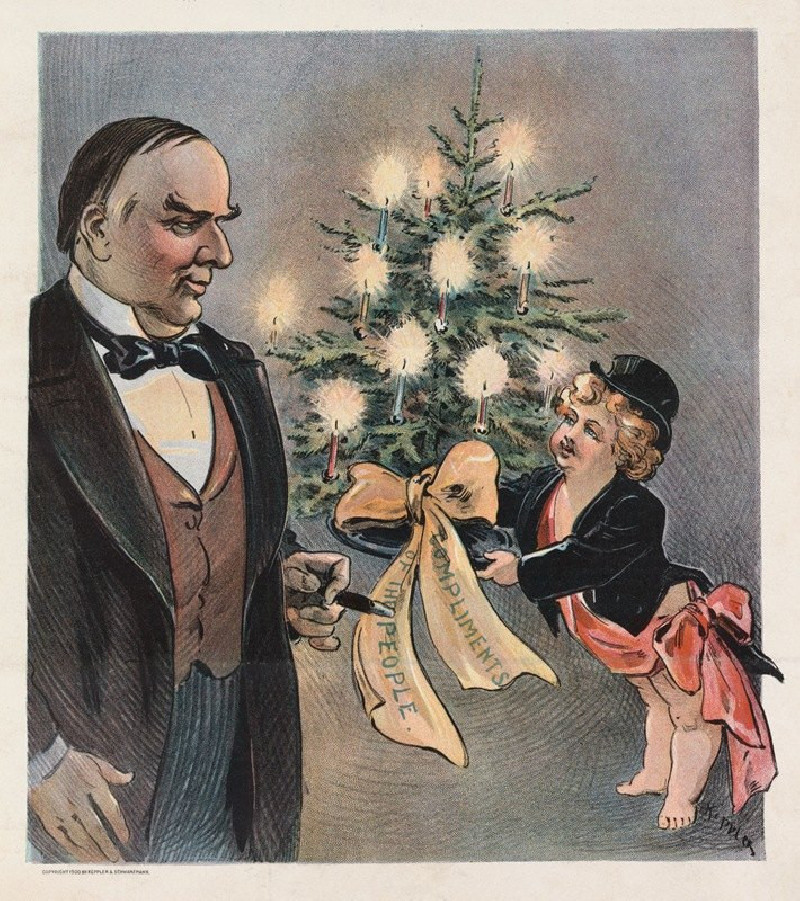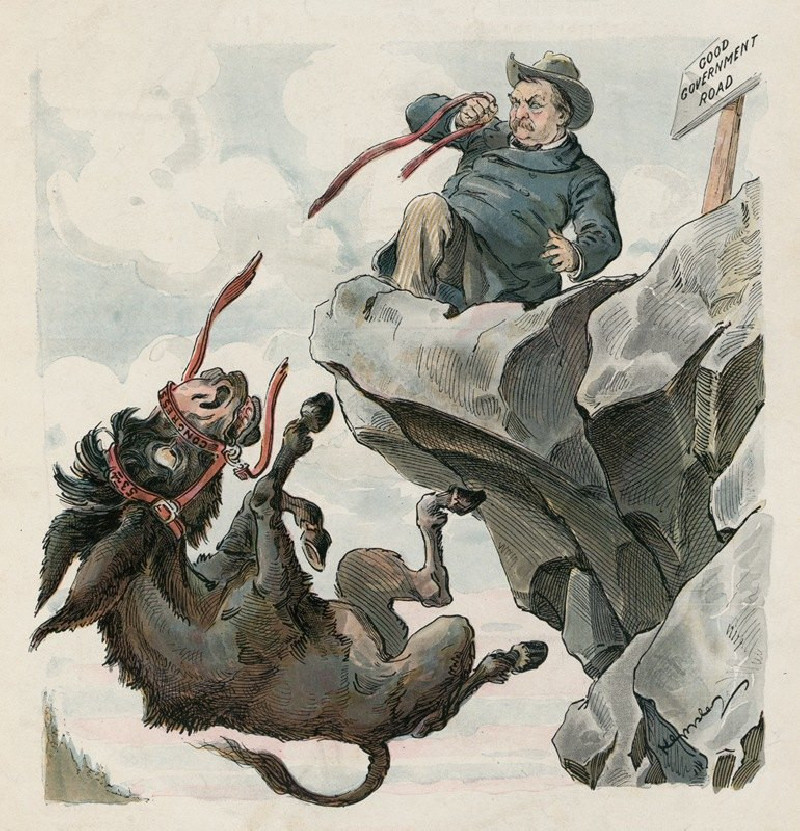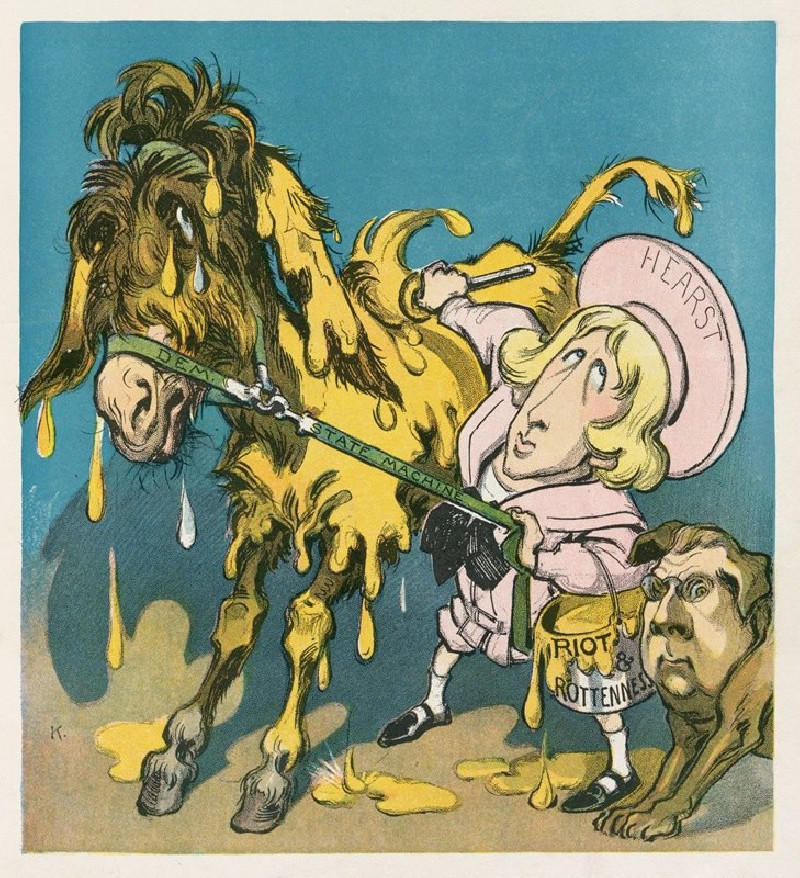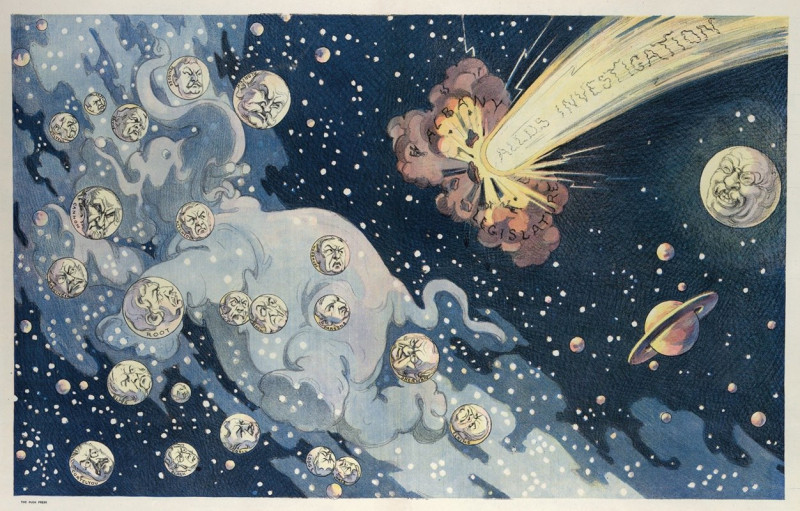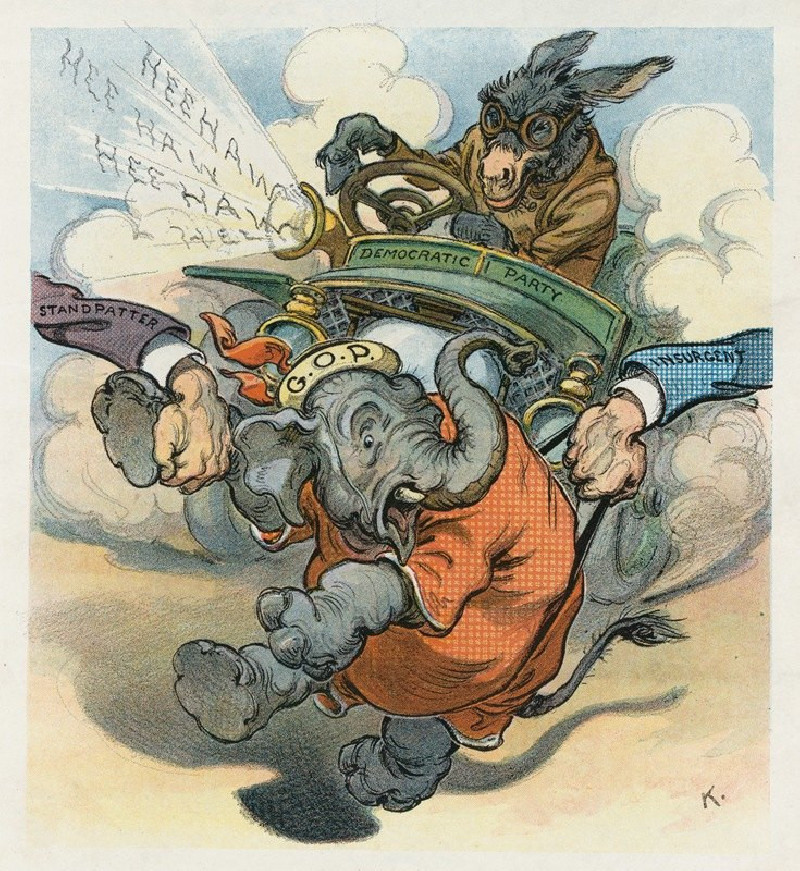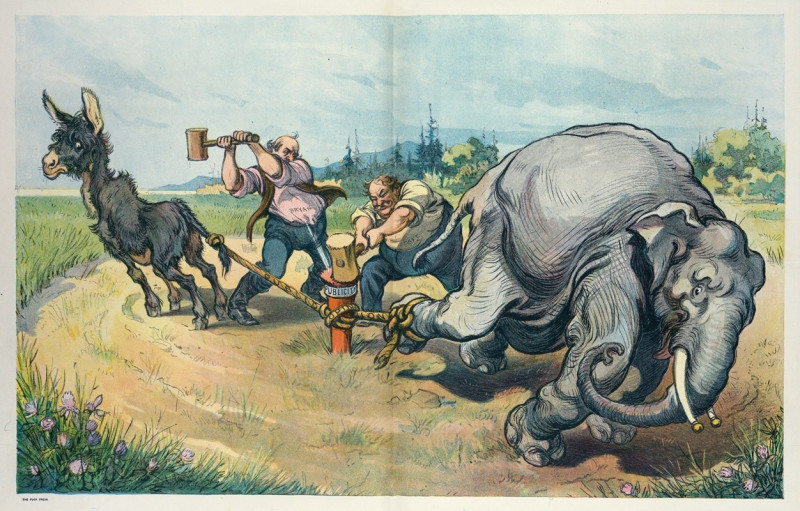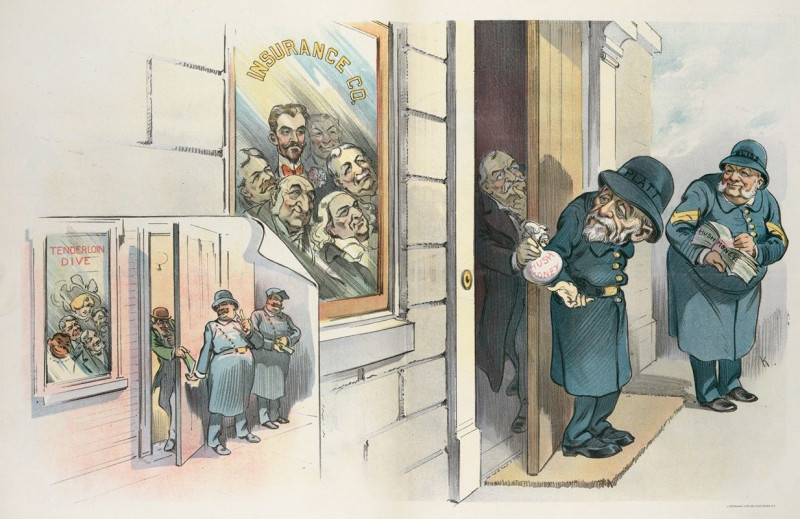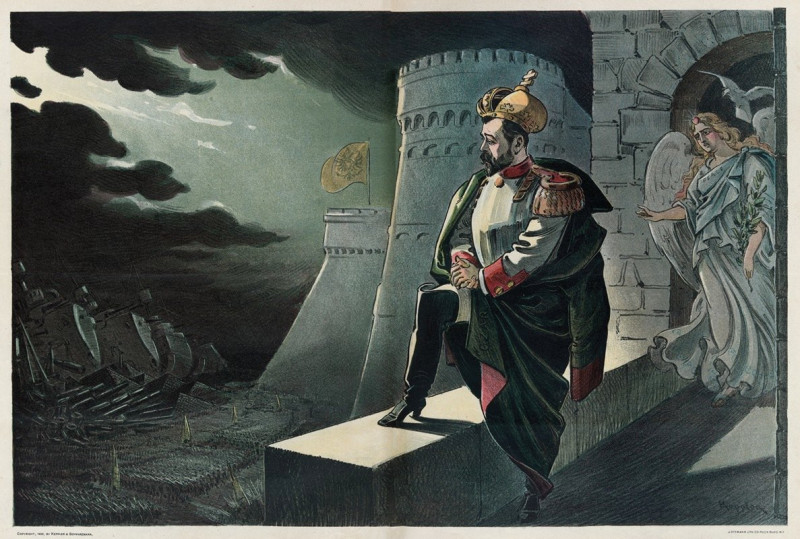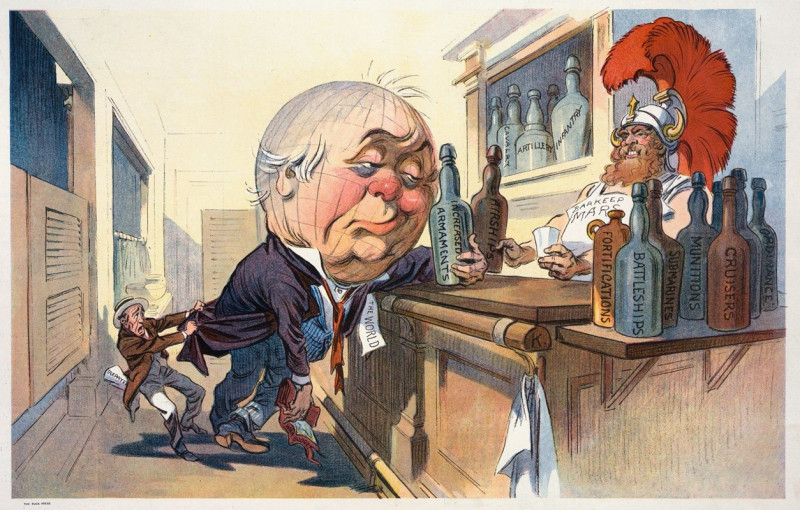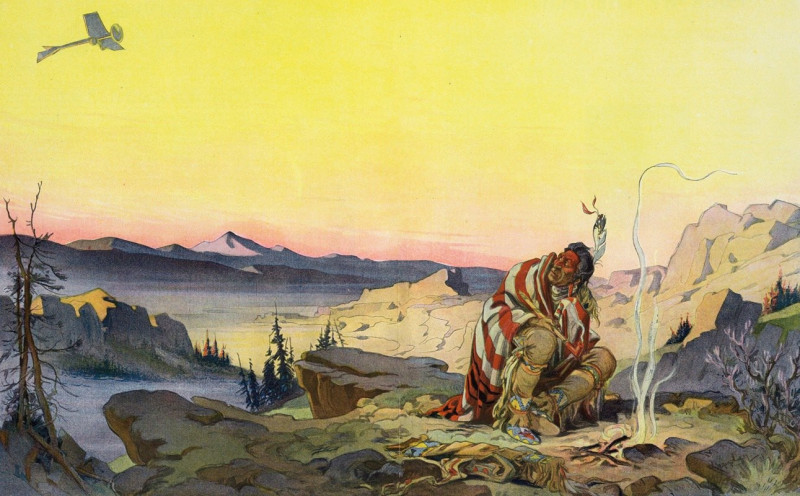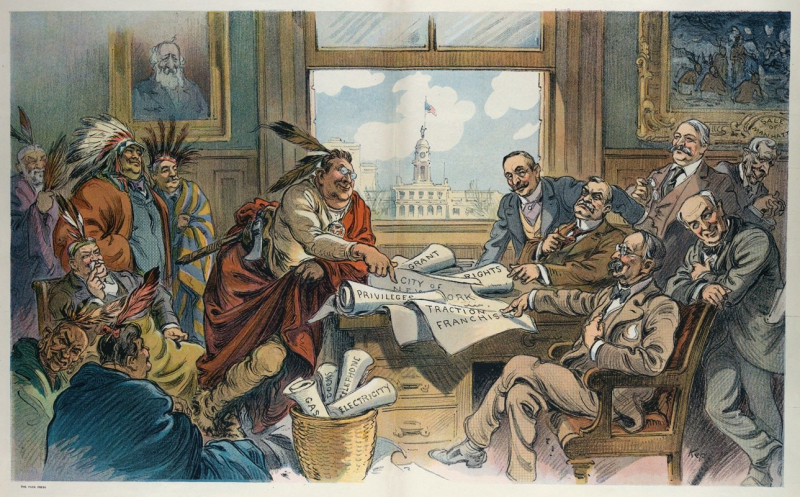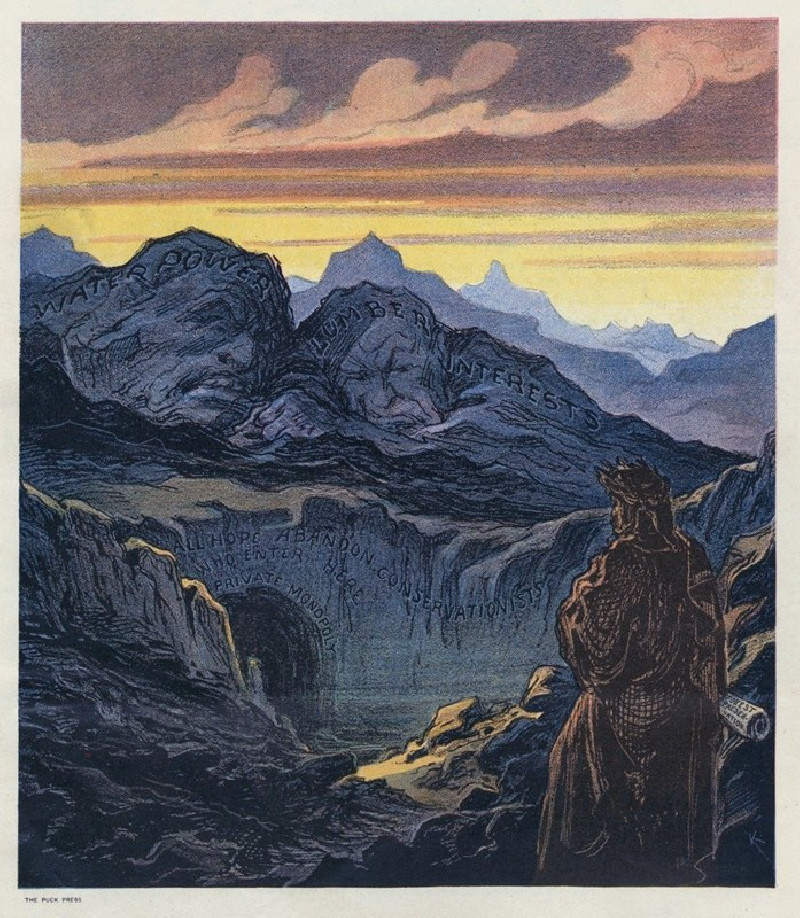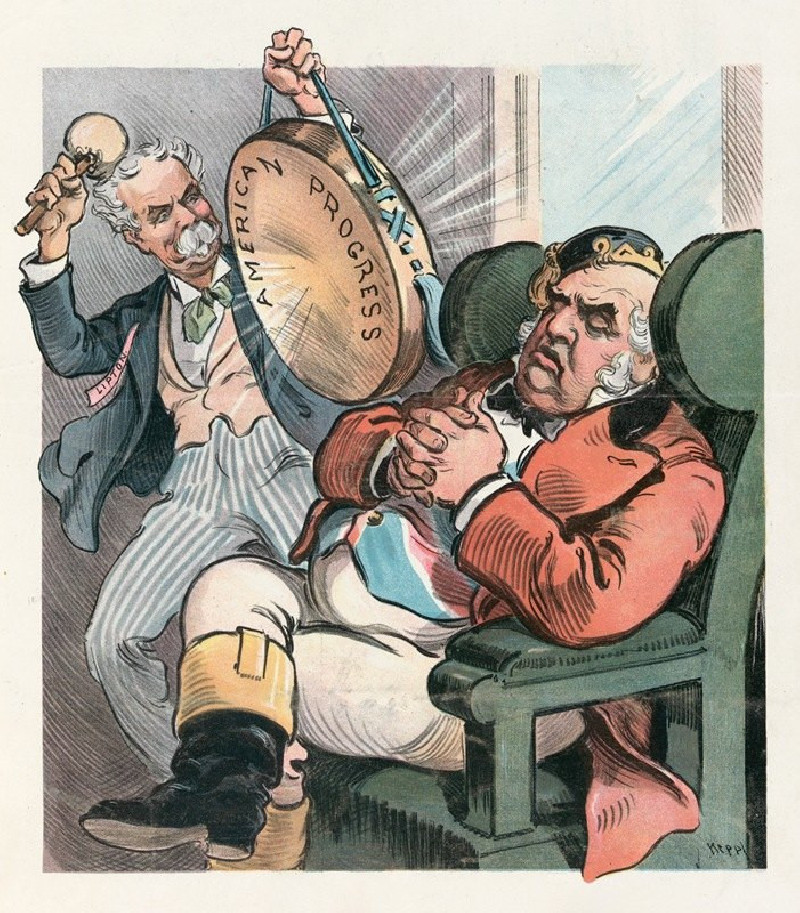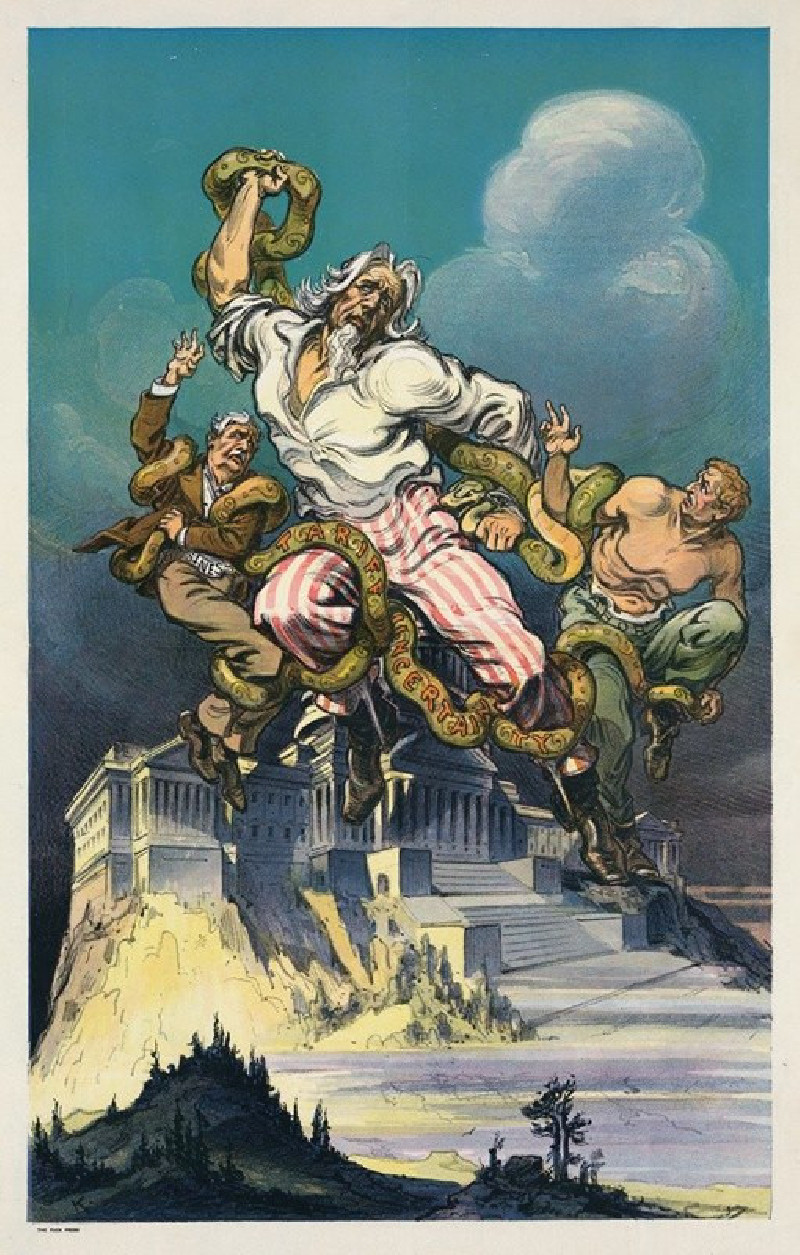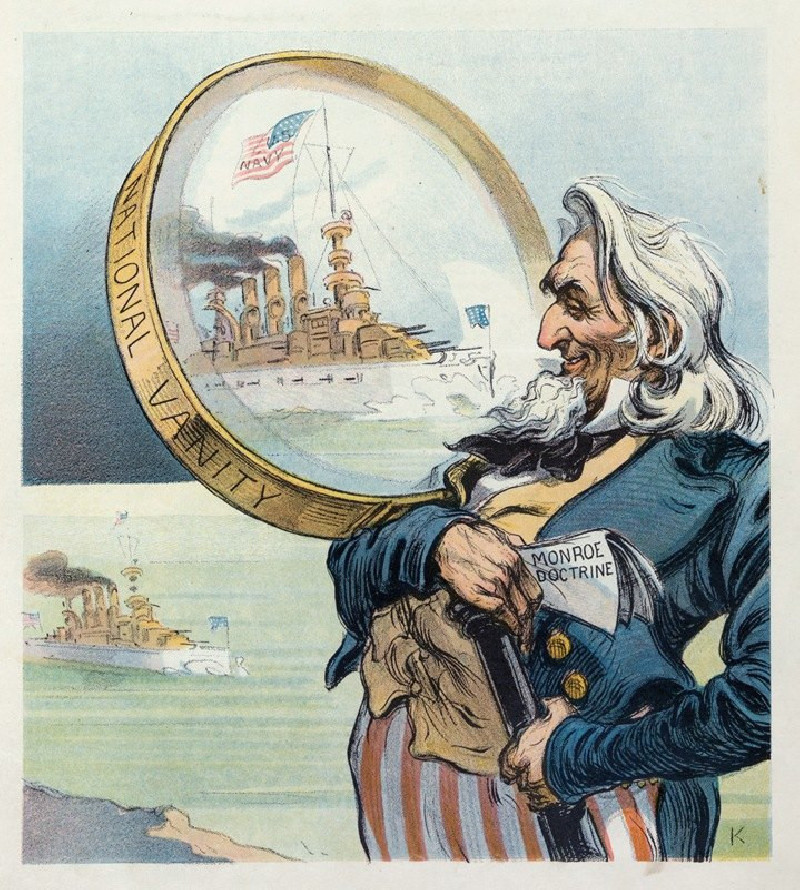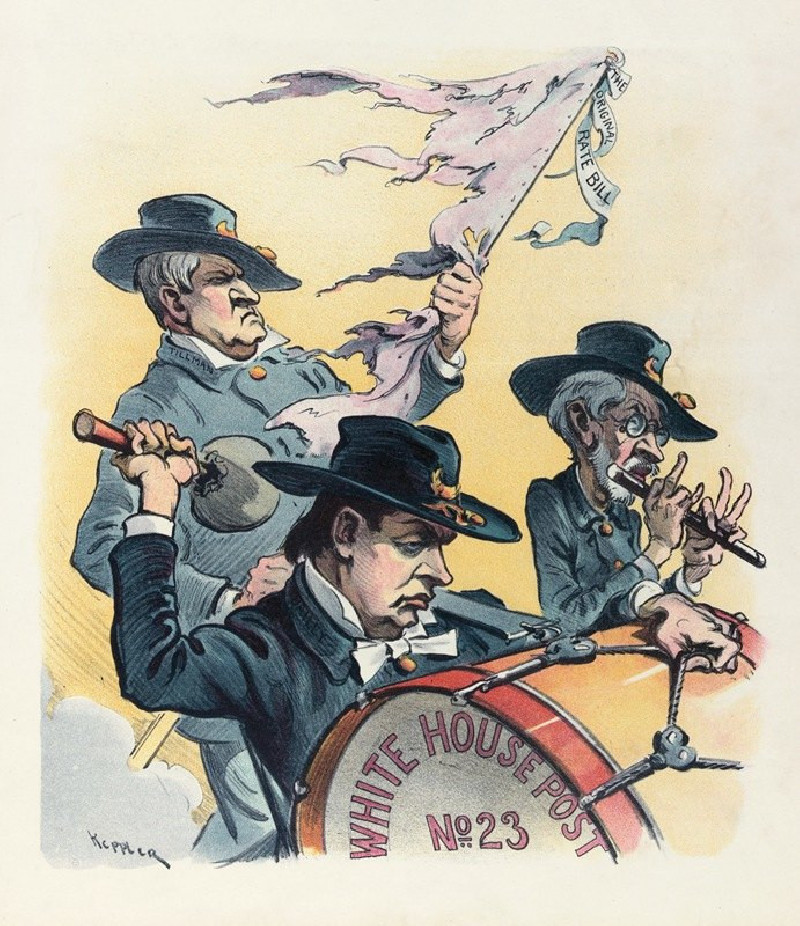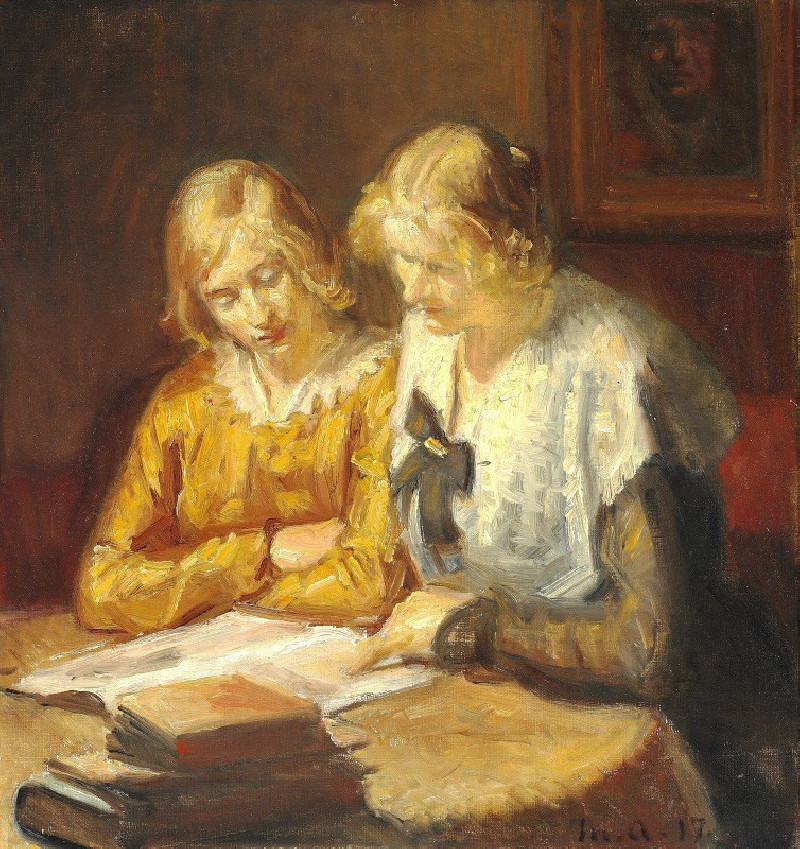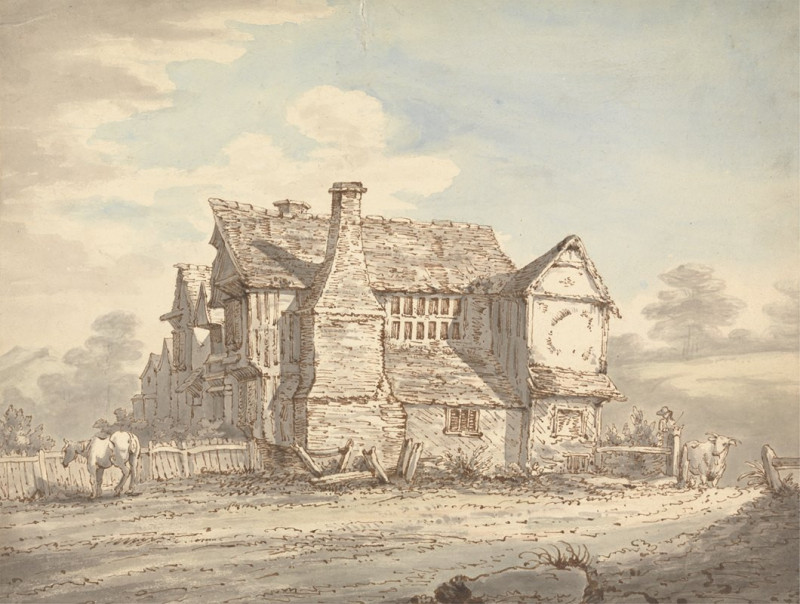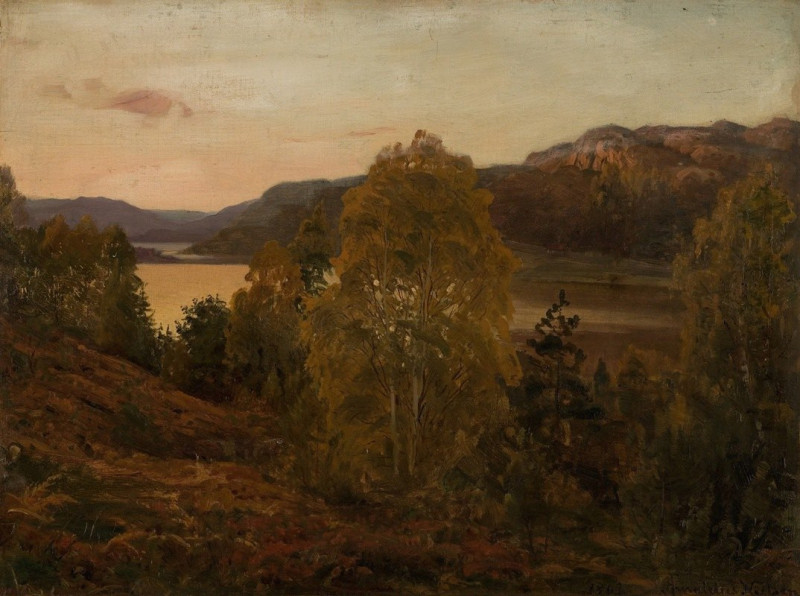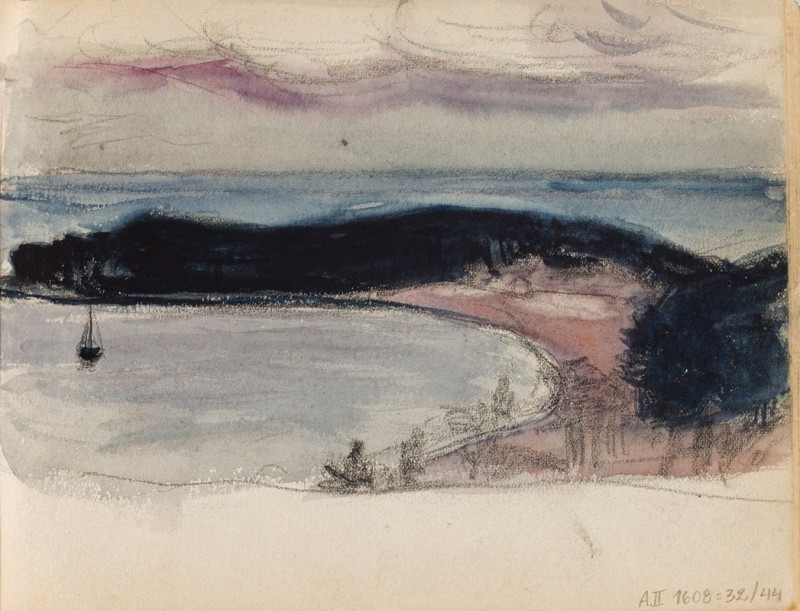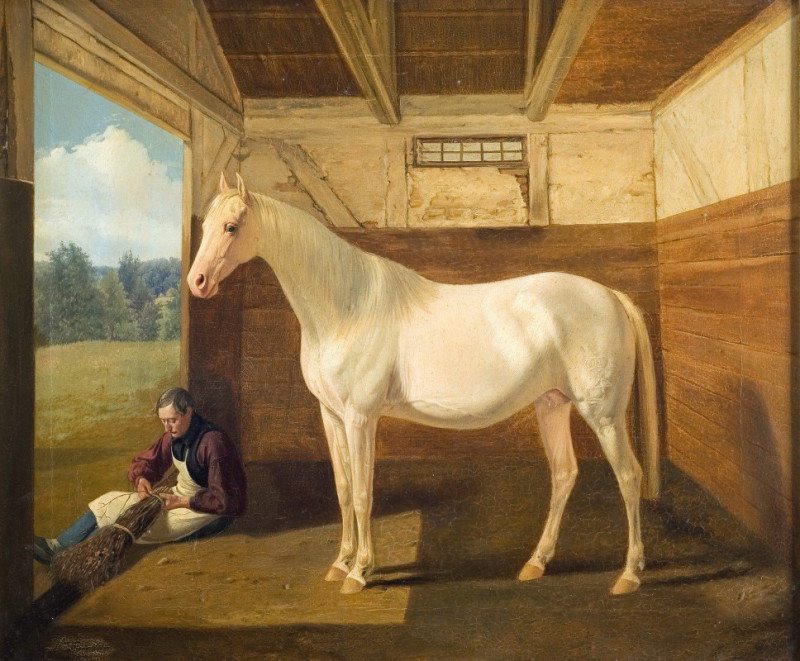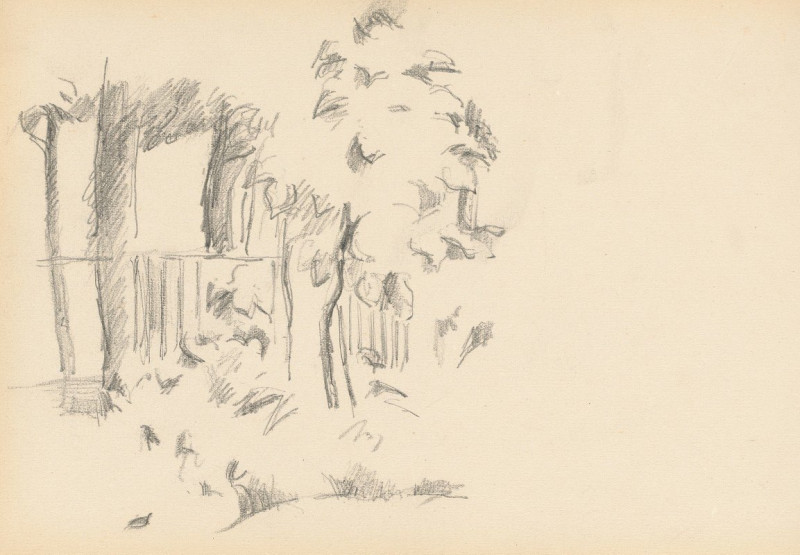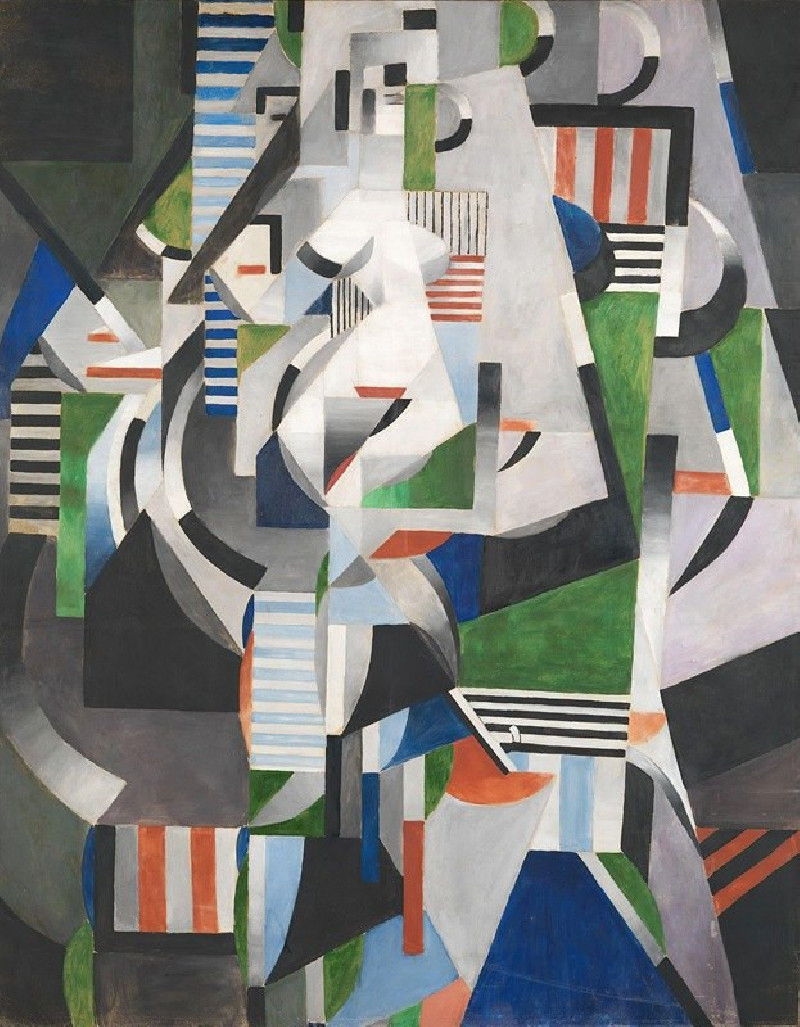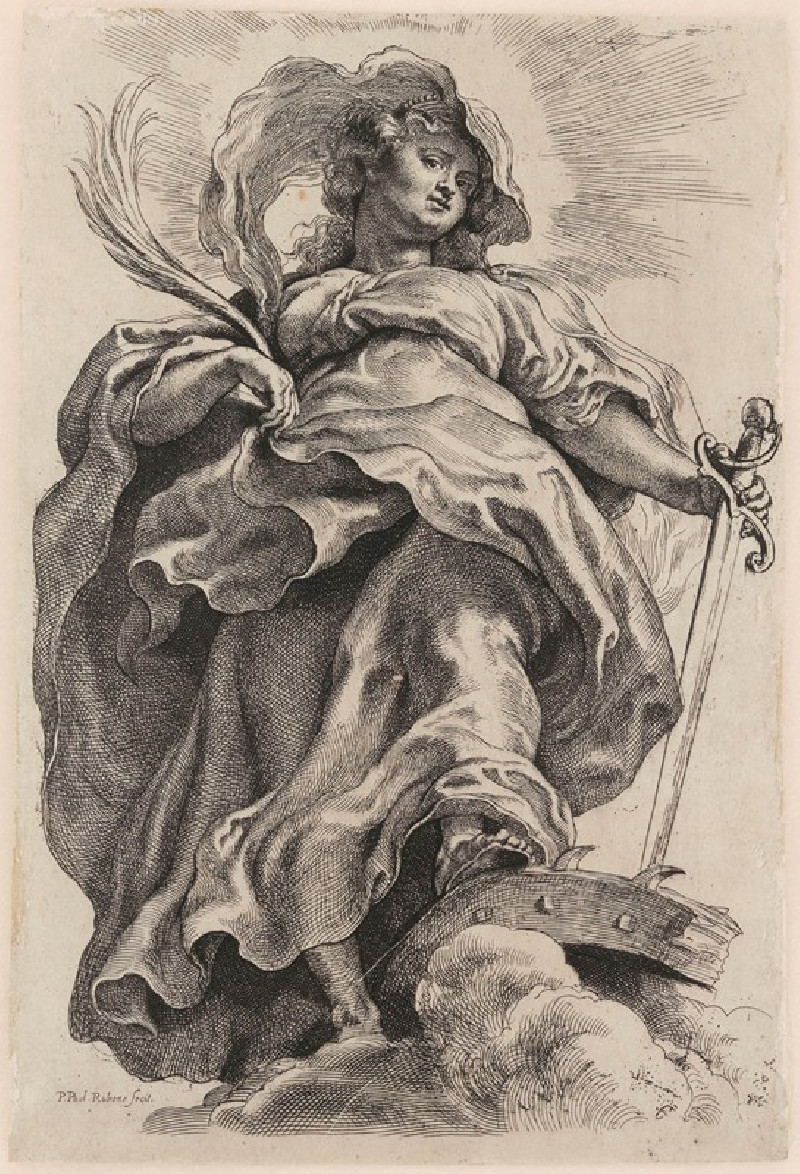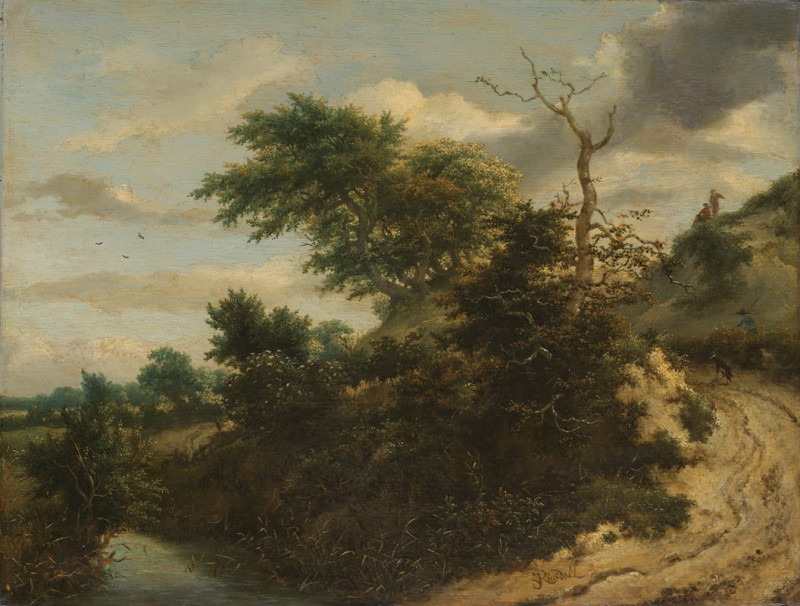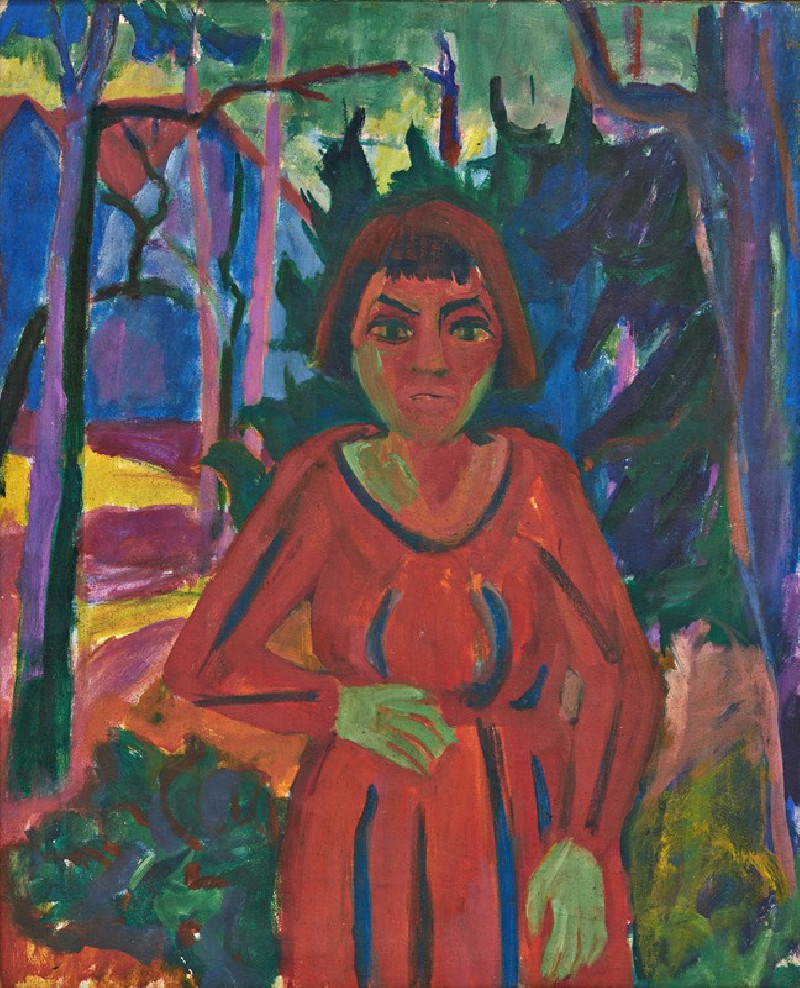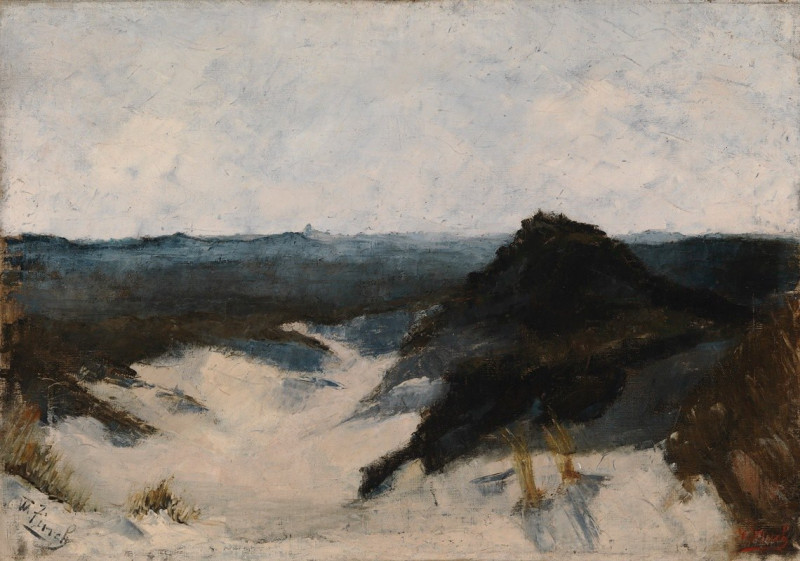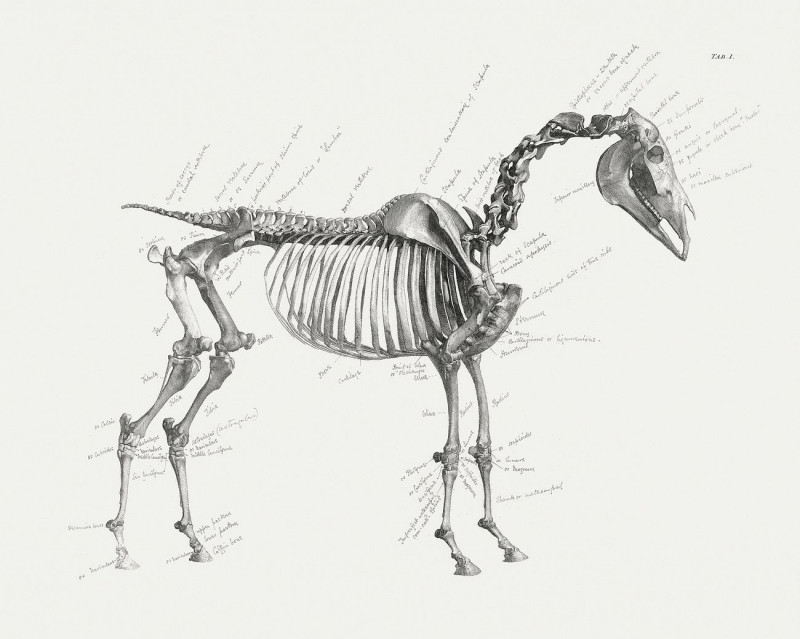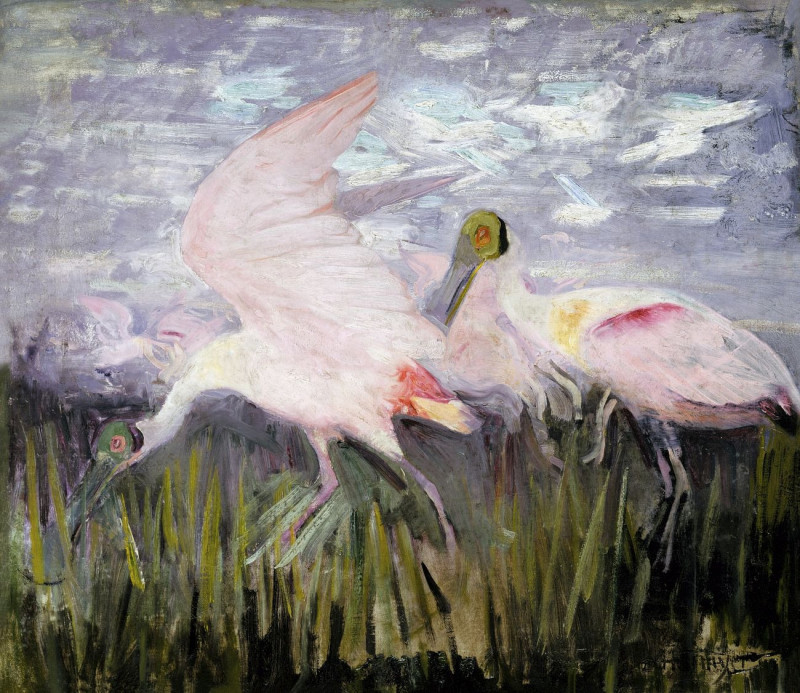See, the conquering hero comes! (1895)
Technique: Giclée quality print
Recommended by our customers
More about this artwork
In this vibrant and lively painting by Udo Keppler, the canvas bursts with color and political satire, illustrating a dramatic scene that captures the essence of late 19th-century geopolitical dynamics. Titled "See, the conquering hero comes!" this artwork is a brilliant example of Keppler's adept skill in blending caricature with serious political commentary.At the center of the composition, we see a figure representing Britain, depicted as a resplendent queen adorned in regal attire, symbolizing Britain's prevailing influence over world affairs during this era. Accompanying her, an ally in the guise of an enthusiastically supportive knight, represents German Emperor William II, identifiable by his famed mustache and exuberant expression. This partnership hints at the geopolitical alliances of the time.To the left of the painting, a character symbolizes the press, playing trumpets, which can be interpreted as the media's role in either heralding or critiquing the era's political maneuvers. This figure elevates the element of public perception and influence in international politics.Foregrounded and seemingly defeated, figures symbolizing France and Russia appear disheveled and dismayed. France, portrayed in the forefront with a desperate expression, and Russia, characterized by traditional attire, both reflect the nations' respective geopolitical positions and challenges they faced during this period.Udo Keppler's artwork not only showcases his technical prowess with its detailed and expressive characters but also serves as a historical commentary, illustrating the complex web of alliances, rivalries, and public engagements that defined the turn of the 20th century.
Delivery
Returns
Udo J. Keppler, since 1894. known as Joseph Keppler, Jr., was an American political cartoonist, publisher, and Native American advocate. The son of cartoonist Joseph Keppler (1838–1894), who founded Puck magazine, the younger Keppler also contributed to cartoons, and after his father's death became co-owner of the magazine under the name Joseph Keppler. He was also a collector of Native American artifacts.

